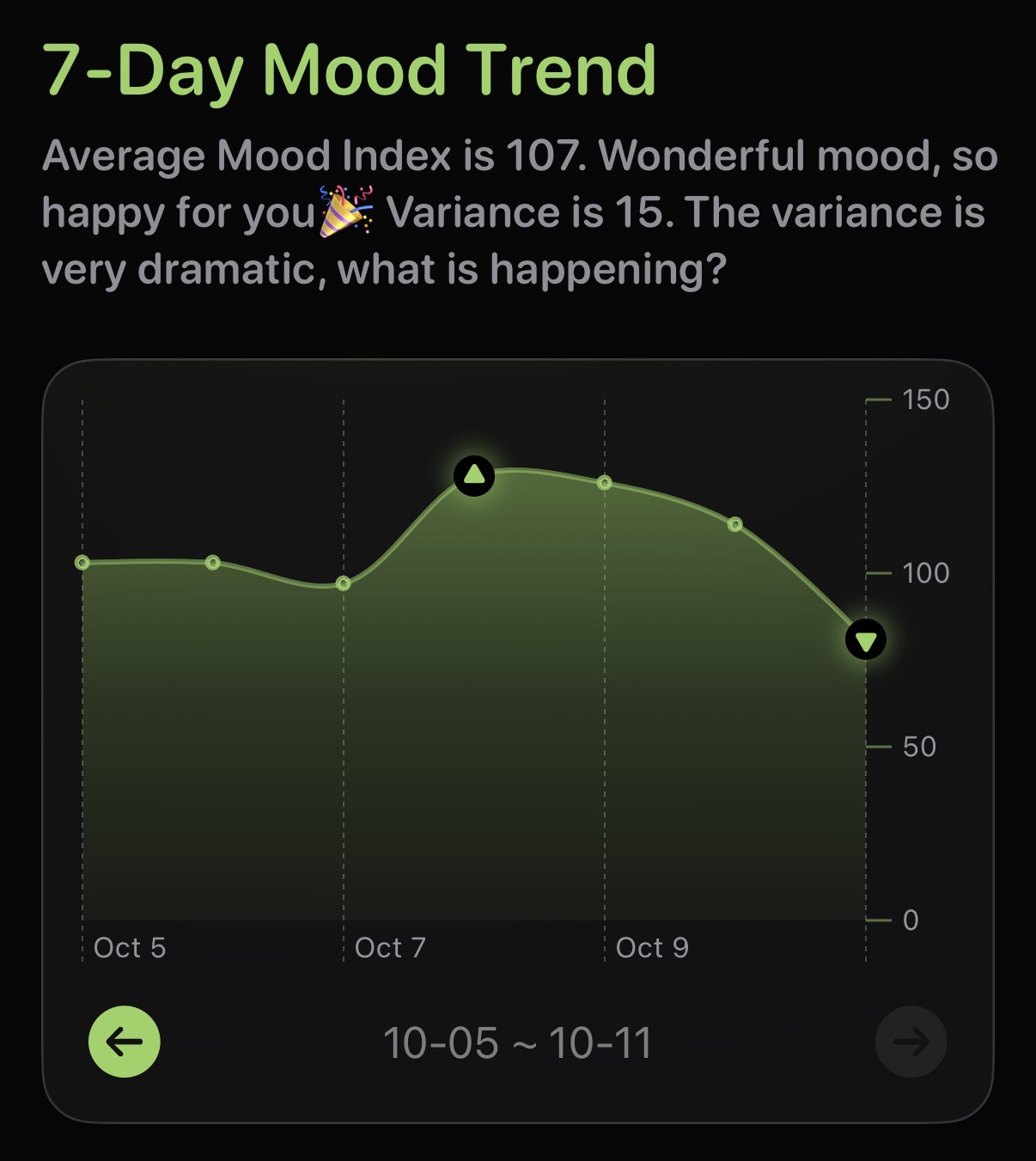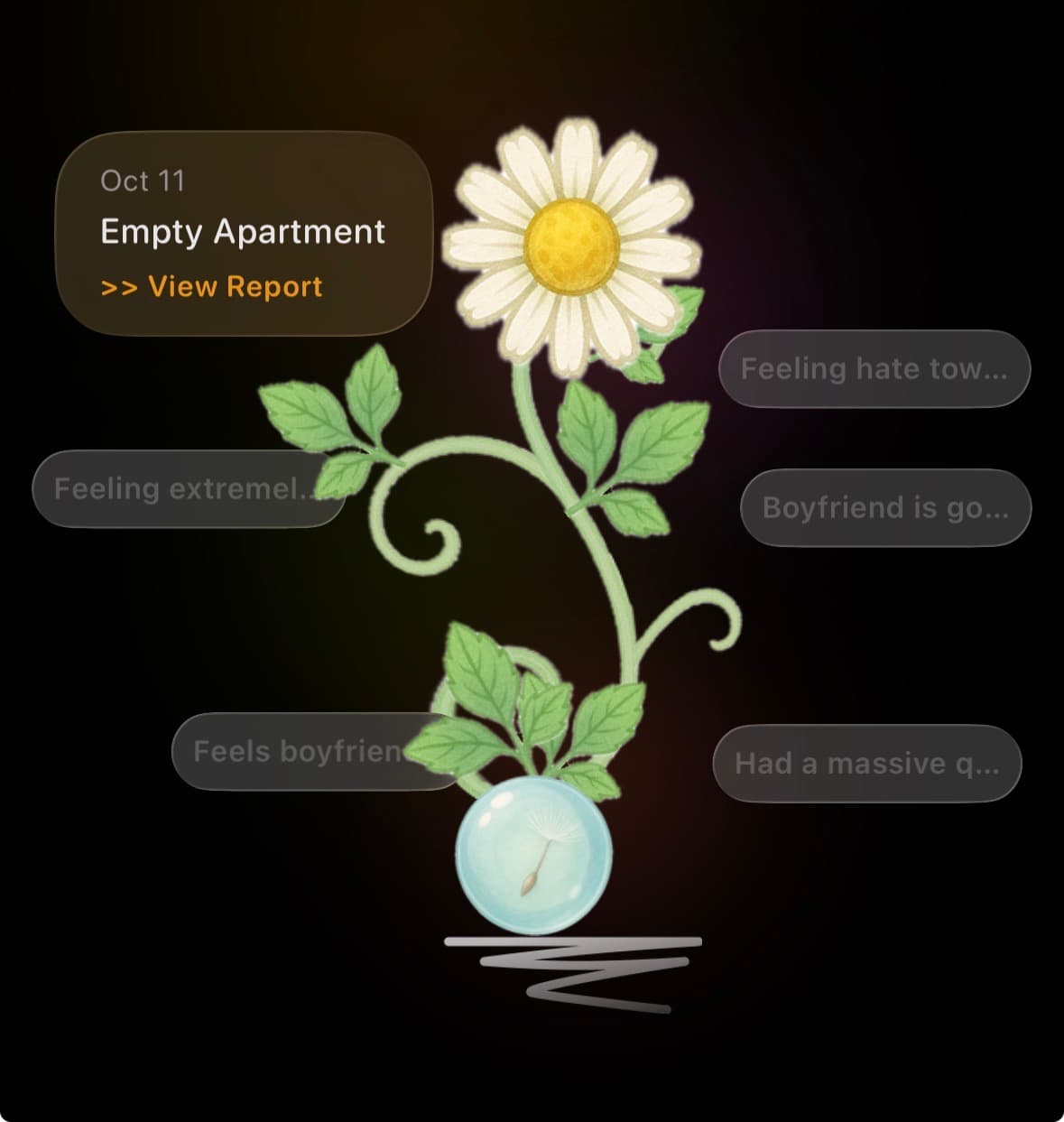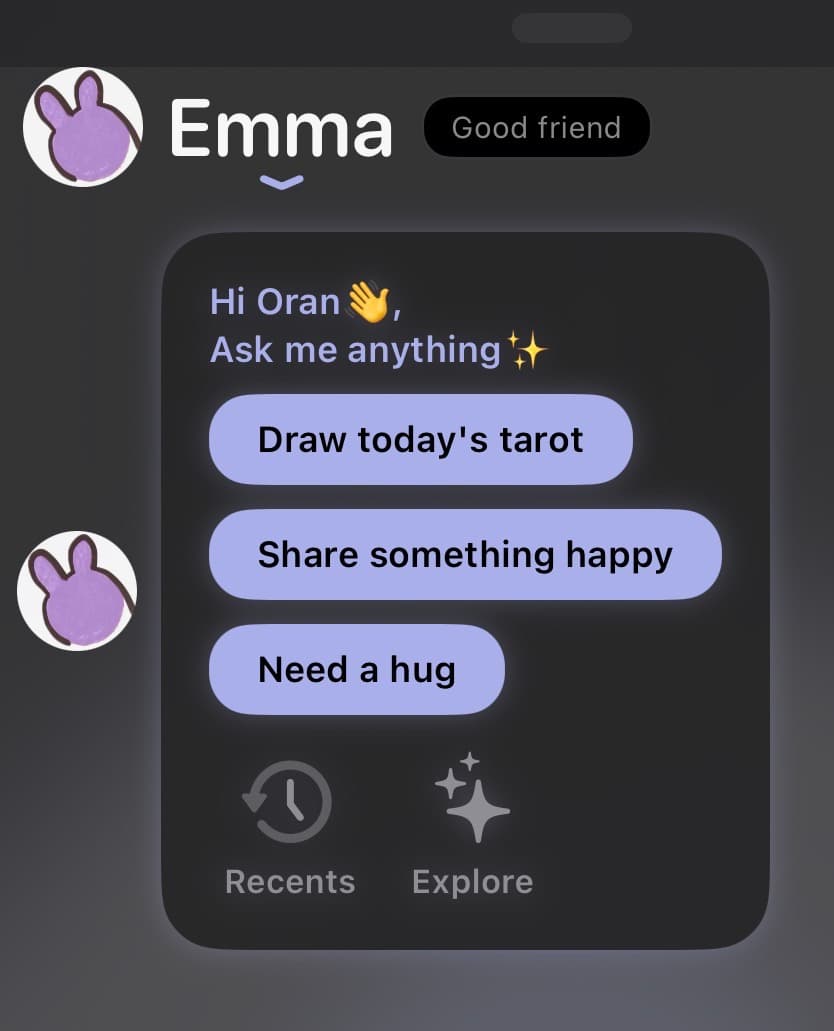Why Mood Tracking Matters
You can't manage what you don't measure. Mood tracking transforms vague feelings into actionable data, revealing patterns invisible to memory alone. Research shows that people who track their moods have 34% better emotional regulation and make more effective mental health decisions.
But not all mood tracking apps are created equal. The best ones go beyond simple emoji logging—they connect moods to context, identify triggers, and provide insights that actually improve mental health.
We've tested the leading mood tracking apps to find those that truly enhance self-awareness. Here are the best options for 2025.
What Makes a Great Mood Tracking App?
- Context capture: Mood + activities + people + location for meaningful patterns
- Visual insights: Charts and graphs that make patterns obvious
- Smart analysis: AI that identifies triggers and trends you'd miss
- Quick logging: 30 seconds or less to record a mood
- Integration: Connects with journaling, sleep, exercise data
- Privacy: Your emotional data deserves protection
1. Lifelight - Best AI-Powered Mood Tracking with Journaling

Why it's #1: Lifelight doesn't just track moods—it connects them to your journal entries, identifies patterns through AI analysis, and provides emotional support when patterns indicate struggle.
Key Mood Tracking Features:
- Integrated mood + journal: See exactly what was happening during mood shifts
- Visual mood calendar: Spot patterns at a glance with color-coded emotional trends
- AI pattern analysis: Emma identifies triggers, protective factors, and cycles automatically
- Memory Vine connections: Links similar emotional experiences across time to show growth
- Weekly insights: AI-generated summaries of your emotional week with actionable observations
- Quick mood logging: Record feelings in seconds without interrupting your day
- Contextual prompts: AI suggests reflective questions based on your mood
Real-World Impact:
The difference with Lifelight is depth. A simple mood app shows you logged "anxious" five times this week. Lifelight reveals that you were anxious before meetings with a specific colleague, that journaling afterward reduced anxiety by two levels, and that similar situations in the past resolved after you set boundaries.
This context transforms mood data from passive observation into active emotional intelligence.
Pricing: Free with premium features
Platforms: iOS, Android, Web
Best for: People who want mood tracking integrated with journaling and AI insights
2. Daylio - Best for Simple, Fast Mood Logging
What it does: Minimalist mood tracking with activities and notes, focused on speed.
Strengths:
- Extremely fast logging (under 15 seconds)
- Custom activities and moods
- Good statistics and graphs
- Works offline
- No account required
Limitations:
- No journaling integration—moods lack context
- No AI analysis of patterns
- Basic insights—just shows correlations
- No emotional support features
- Can't see why moods changed
Pricing: Free with ads, Premium $3.99/month
Best for: People who want minimalist tracking without journaling
3. Moodflow - Best for Detailed Mood Nuance
What it does: Tracks moods with high granularity using multiple emotions and intensity levels.
Strengths:
- Choose multiple emotions per entry
- Intensity slider for nuance
- Beautiful, calming design
- Emotion wheel for self-discovery
- Private notes on entries
Limitations:
- Can feel overwhelming with too many emotion choices
- No AI pattern recognition
- Limited insights compared to Lifelight
- Doesn't connect moods to activities
- No journaling or reflection prompts
Pricing: $4.99/month or $29.99/year
Best for: People who want to track complex, layered emotions
4. eMoods - Best for Bipolar Disorder Tracking
What it does: Medical-grade mood tracking designed specifically for bipolar disorder management.
Strengths:
- Tracks mania and depression levels
- Medication and symptom logging
- Exportable reports for doctors
- Sleep and trigger tracking
- Developed with psychiatric input
Limitations:
- Very clinical interface
- Designed for specific diagnosis, not general wellness
- No emotional support or AI insights
- Can feel medicalized rather than supportive
Pricing: Free with premium reports
Best for: People managing bipolar disorder who need medical-grade tracking
Quick Comparison Chart
| App | Best For | AI Insights | Journaling | Price |
|---|---|---|---|---|
| Lifelight | Deep insights + context | ✓ Advanced | ✓ Integrated | Free+ |
| Daylio | Fast, simple logging | ✗ | Notes only | $4/mo |
| Moodflow | Complex emotions | ✗ | Notes only | $30/yr |
| eMoods | Bipolar tracking | ✗ | ✗ | Free+ |
Choosing Your Mood Tracking App
For self-awareness & growth: Lifelight's AI analysis and journaling integration provide the deepest insights
For minimalism: Daylio is fast but won't tell you why moods change
For emotional complexity: Moodflow tracks nuance but lacks pattern analysis
For clinical needs: eMoods is designed for bipolar disorder specifically
Why Lifelight's Approach Works Better

Here's the fundamental problem with most mood tracking apps: they collect data but don't help you understand it.
Daylio shows you logged "anxious" on Tuesday. So what? Without context, you can't learn from it. Was it the meeting? The lack of sleep? The argument?
Lifelight solves this by integrating mood tracking with journaling. When you log anxiety, Emma asks "What's on your mind?" Your response becomes the context. Later, when reviewing patterns, you don't just see "anxious Tuesday"—you see "anxious before presentation, relieved after it went well."
The AI takes this further by connecting dots across weeks: "You've felt anxious before 5 similar situations, and each time, preparation reduced the anxiety. Here's what helped before."
This is the difference between data and insight.
How to Get the Most from Mood Tracking
1. Track Consistently
Set reminders for the same time daily. Morning and evening check-ins capture the full emotional range. Lifelight's gentle notifications make this easy.
2. Add Context
Don't just log moods—add a sentence about what's happening. This is where Lifelight shines: the journaling is built in, not an afterthought.
3. Review Patterns Weekly
Lifelight does this automatically with weekly letters, but also look at your mood calendar. What patterns emerge? What surprises you?
4. Test Hypotheses
Think exercise helps your mood? Track it. Suspect coffee makes you anxious? Log it. Let data confirm or challenge your assumptions.
5. Share with Therapists
Visual mood data is incredibly helpful in therapy. Lifelight's insights give you concrete examples to discuss.
The Science of Mood Tracking
Research on mood tracking shows:
- 34% improvement in emotional regulation with consistent tracking
- Better treatment outcomes: Patients who track moods respond 40% better to therapy
- Earlier intervention: Tracking helps identify patterns before they become crises
- Self-compassion: Seeing good days after bad ones builds resilience
- Empowerment: Understanding patterns gives you agency over mental health
But these benefits require context and analysis—exactly what Lifelight's AI provides and simple mood loggers lack.
Common Mood Tracking Mistakes
Tracking Without Context
Emoji-only logging tells you how you felt, not why. Always add context, even just one sentence. Lifelight makes this seamless.
Ignoring the Data
Tracking for months but never reviewing is wasted effort. Use Lifelight's weekly insights to make tracking actionable.
Expecting Linear Progress
Mood tracking will show ups and downs—that's normal. Look for trends over weeks, not perfection daily.
Using Too Many Categories
Some apps let you track 50 emotions. That's overwhelming and inconsistent. Lifelight balances nuance with usability.
Final Thoughts
If you just want to log moods quickly, Daylio works. If you need medical-grade tracking for bipolar disorder, use eMoods. But if you're serious about self-awareness—if you want to understand not just what you feel but why—Lifelight is unmatched.
The combination of mood tracking, journaling context, AI pattern analysis, and emotional support creates a feedback loop that genuinely improves mental health. You don't just collect data; you develop emotional intelligence.
Your moods are trying to tell you something. Use an app that helps you listen.



